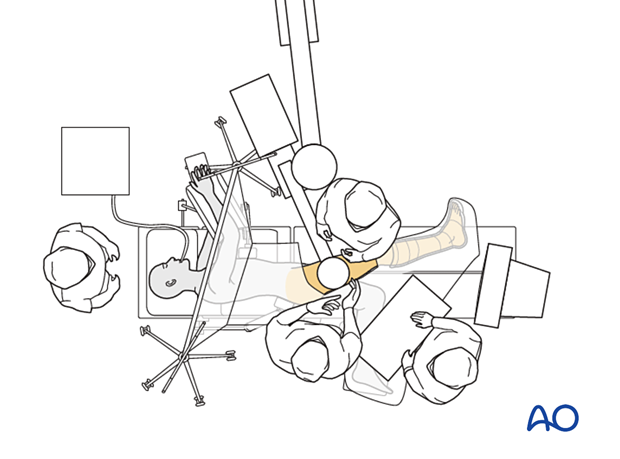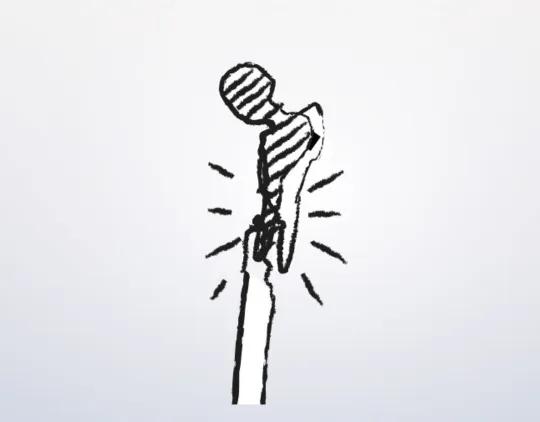Lateral decubitus position
1. Introduction
The patient is placed in a lateral decubitus position with the injured side up on a radiolucent table which allows limb mobility.
This position can be helpful for obese patients.
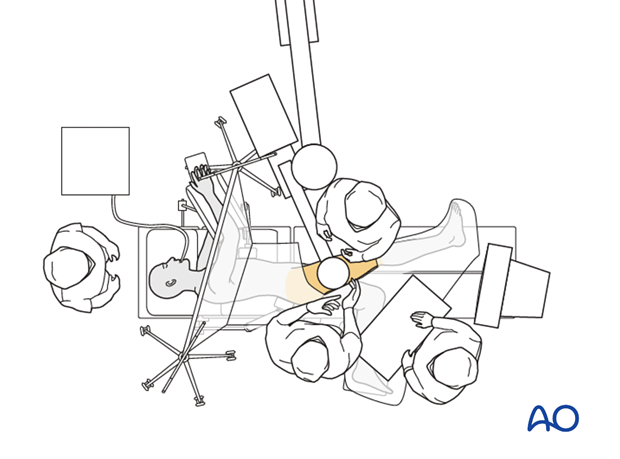
2. Obese patients
In the lateral position, the fatty tissue falls away from the surgical field. This allows for proper visualization of the fracture and hemostasis.
Note: Meticulous soft tissue handling is particularly important in the medically infirmed elderly and obese patients, as a complication related to a periprosthetic femur fracture can lead to disastrous complication of the arthroplasty.
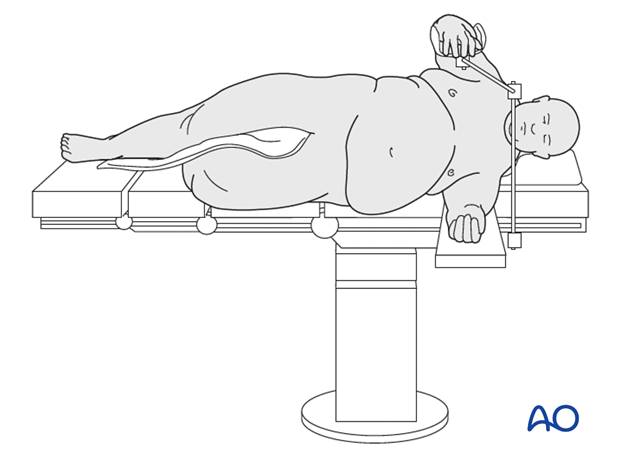
3. Preoperative preparation
- Verify site and side of fracture with the patient along with the type of operation planned
- Ensure that the operative site has been marked by the surgeon
- Condition of the soft tissues (fracture open or closed)
- Implant to be used (note: plate comes in right and left versions)
- Patient positioning
- Details of the patient (including a signed consent form and appropriate antibiotic and thromboprophylaxis)
- Comorbidities, including allergies
4. Anesthesia
This procedure is performed with the patient under general or regional anesthesia.
If a spinal anesthetic is used, the surgeon and anesthetist need to be confident that the procedure will not last more than 1.5 hours.
5. Prophylactic antibiotics
Antibiotics are administered according to local antibiotic policy and specific patient requirements.
6. Positioning
- The patient is supported in the lateral decubitus position on a radiolucent flat-top operating table.
- Pad all bony prominences and neurovascular structures carefully.
- A gel roll should be placed under the mid-portion of the chest to protect the axilla and allow for ventilation
- Place the ipsilateral arm across the chest to be out of the way.
- Position the image intensifier on the opposite side of the injury and the operating surgeon.
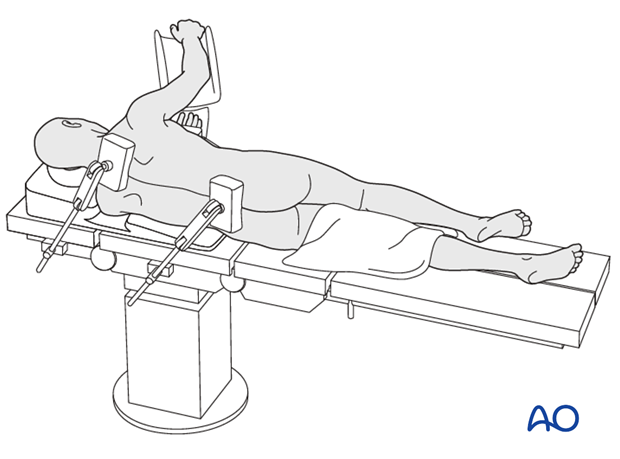
- Ensure that you can get good-quality AP (illustrated) and lateral x-ray views of the fracture site, full prosthesis, and distal femur before draping.
- The uninjured leg can be flexed forward or extended backward to get it out of the way of a lateral x-ray.
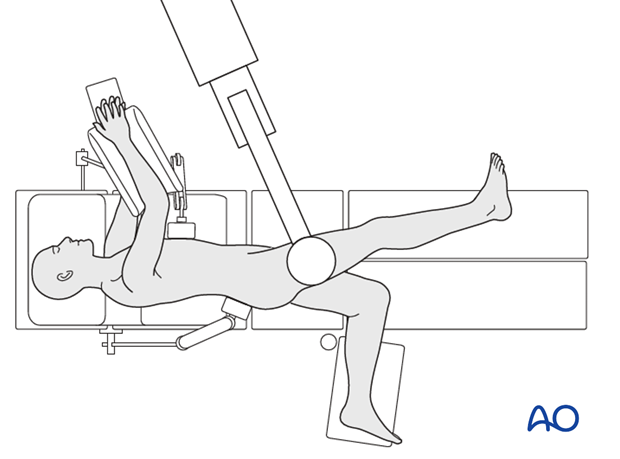
7. Skin disinfecting and draping
- Drape the limb with a single-use U-drape. A stockinette covers the lower leg and is fixed with tape.
- Drape the image intensifier.
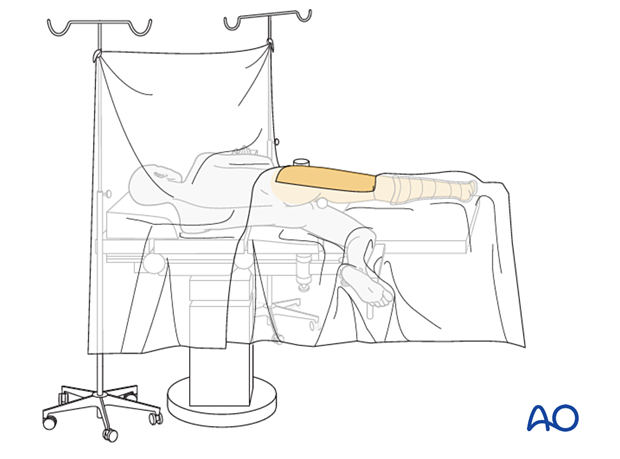
8. Operating room set-up
- Position the operating table (if feasible) within the operating room to allow maximum space on the operating side for the surgeon, staff, and trolleys.
- The surgeon and the ORP stand on the side of the injury. The Assistant may be on either side.
- Place the image intensifier on the opposite side of the patient, perpendicular to the patient.
- Place the image intensifier display screen in full view of the surgical team and the radiographer
